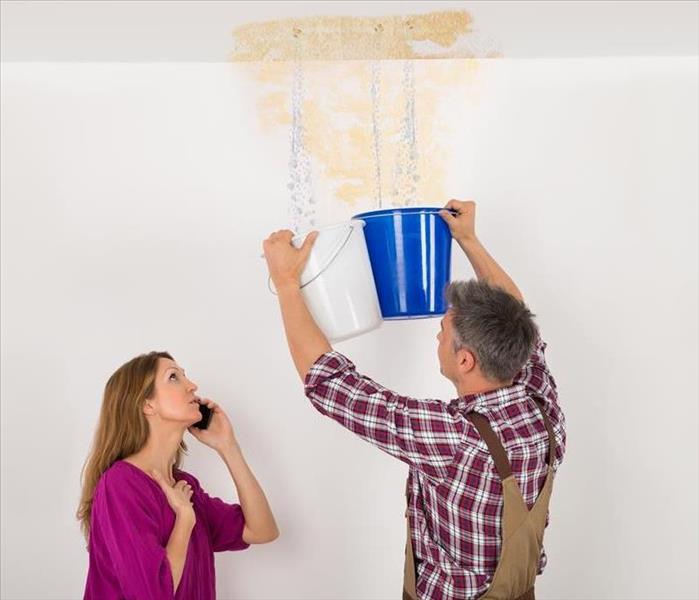5 Essential Tips for Repairing Residential Water Damage
6/17/2022 (Permalink)
Plumbing lines break when they become clogged or deteriorated. Often, these conditions occur behind walls or under the ground, leaving homeowners in Layton, UT, to face sudden flooding and severe water damage. What should you do? Take action immediately.
What To Do When Water Damage Impacts Your Home
For one second, everything works fine. A moment later, you're staring at puddles of moisture, filling up the hallways and saturating precious belongings. When this event happens, it's imperative to react immediately. Don't grab the towels and mop. Instead, follow these five essential tips to minimize harm and get your home cleaned properly.
1. Find and Fix the Broken Pipes
When you see damp spots on walls or water spraying from a fixture, focus on the underlying cause. Stop the water from entering the home. Turn off the main water supply to the area, avoiding additional floods and breaches.
Work with professionals to identify pipe vulnerabilities and repair the problem. Scope the lines with visual equipment, closely examining the metal. Tend to any trouble.
2. Contact Specialists for a Property Assessment
Water damage is seemingly deceptive. Moisture seeps into porous items, dampening them and bringing with them spores and microbes. The fluid spreads far beyond the visible wet lines, often impacting objects further away. Therefore, owners should contact professional water remediation crews in Layton, UT, to look over the premises. Using moisture readers and other innovative technology, they determine how much of the home has received water impact.
In addition, they take samples from the walls, floors and valuables, testing for possible contamination. The data provides accurate information to devise a personalized response plan for the home.
3. Reduce Moisture Levels
Fungus thrives in dark, damp locations. Floods from pipes saturate materials and often trigger their reproduction. The Environmental Protection Agency, EPA, notes that these growths move quickly, rapidly increasing within 24-48 hours. Furthermore, the room's enhanced humidity continues to promote proliferation.
Therefore, owners must eliminate the wetness. The EPA suggests decreasing numbers to 30-60%. Run industrial-strength dehumidifiers throughout the impacted zones. These units pull the fluid from the walls and floors. Test regularly with moisture readers to ensure you achieve lower moisture numbers.
Drywall and carpeting hold the spores and moisture and are hard to clean thoroughly. Tear them out to lower the contamination. Remove heavily soaked items. Scrutinize all possessions. Non-porous objects can be wiped down and removed during cleaning. Assess porous things to determine if they can stay or be thrown away.
4. Sanitize and Treat the Room
When water cleanup is over, specialists turn attention to sanitizing and deodorizing treatments. Wash all non-porous items and treat them with an antimicrobial product. Clean air vents and allow experts to use their certified training and technology to reduce unpleasant odors.
5. Restore the Location's Structure and Belongings
With the underlying conditions handled, the repairs begin. Torn-out areas get rebuilt. Damaged items get replaced, and the crew starts to paint and restore the premises to better than new conditions.
Don't let water damage harm your home. Mitigate harm and restore quickly, getting your place back to normal. It's critical to take prompt action, drying the premises quickly and fixing the moisture source.





 24/7 Emergency Service
24/7 Emergency Service
